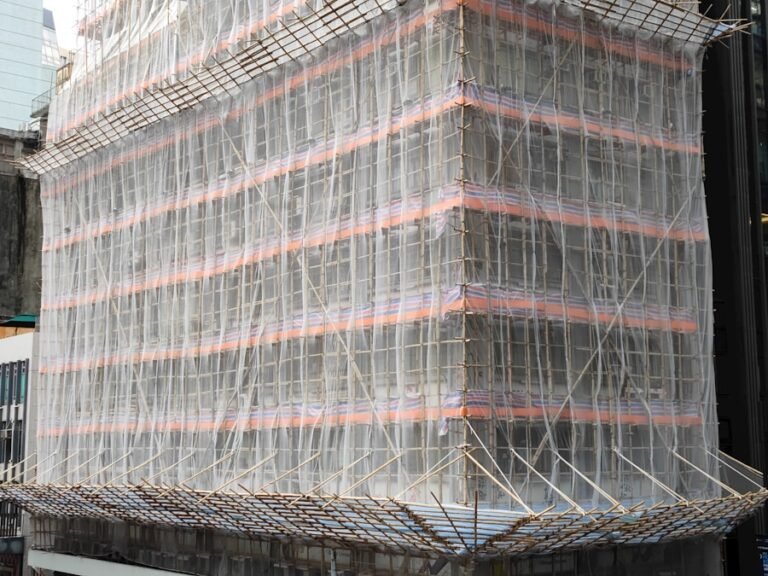One of the most common reasons for construction project failures is the lack of proper permits and licenses. Without the necessary paperwork, a construction project can be shut down by local authorities, leading to delays and increased costs. This can occur when contractors and builders fail to obtain the required permits before starting work, or when they use unlicensed subcontractors. In some cases, builders may try to cut corners by avoiding the time and expense of obtaining permits, only to face legal consequences later on. This can result in fines, legal battles, and even the demolition of the structure in extreme cases.
Furthermore, working without the proper permits can also lead to safety hazards and liability issues. Without the oversight of local building authorities, construction projects may not meet safety standards, putting workers and future occupants at risk. Additionally, if an accident occurs on a site without the necessary permits, the liability can fall on the property owner or developer. Therefore, it is crucial for all parties involved in a construction project to ensure that they have obtained all the required permits and licenses before beginning any work.
Poor Quality Materials and Workmanship
Another common reason for construction project failures is the use of poor quality materials and workmanship. This can occur when builders and contractors prioritize cost savings over quality, leading to subpar results that can compromise the integrity and longevity of a structure. In some cases, builders may use inferior materials to cut costs, leading to issues such as structural instability, water damage, and mold growth. Similarly, poor workmanship can result in shoddy construction that fails to meet safety and quality standards.
Using poor quality materials and workmanship can also lead to legal and financial repercussions. If a building fails to meet code requirements due to subpar materials or workmanship, it may need to be torn down or extensively renovated, leading to significant costs and delays. Additionally, property owners and developers may face lawsuits from occupants or buyers who have been harmed by the poor quality of the construction. Therefore, it is essential for all parties involved in a construction project to prioritize quality over cost savings to ensure the long-term success of the project.
Ignoring Local Building Codes and Regulations
Ignoring local building codes and regulations is another common reason for construction project failures. Building codes are put in place to ensure the safety and integrity of structures, as well as to protect the environment and public health. However, some builders and developers may choose to ignore these regulations in an effort to expedite the construction process or cut costs. This can lead to structures that do not meet safety standards, putting occupants at risk and leading to legal consequences for the property owner or developer.
Furthermore, ignoring building codes and regulations can also result in environmental harm. For example, failing to adhere to environmental regulations can lead to pollution, habitat destruction, and other negative impacts on the surrounding ecosystem. Additionally, structures that do not meet energy efficiency standards can contribute to increased carbon emissions and energy consumption. Therefore, it is crucial for all parties involved in a construction project to prioritize compliance with local building codes and regulations to ensure the safety of occupants and the environment.
Inadequate Budgeting and Financial Planning
Inadequate budgeting and financial planning is another common reason for construction project failures. Construction projects are complex undertakings that require careful financial management to ensure their success. However, some developers and property owners may underestimate the costs involved in a project or fail to account for unexpected expenses. This can lead to budget overruns, delays, and even project abandonment if funds run out before completion.
Additionally, inadequate budgeting can lead to compromises in quality and safety. When developers are faced with budget constraints, they may choose cheaper materials or cut corners on construction methods to save money. This can result in structures that do not meet safety standards or that are prone to premature deterioration. Furthermore, inadequate budgeting can also lead to legal issues if contractors and suppliers are not paid on time, leading to liens and lawsuits. Therefore, it is essential for all parties involved in a construction project to conduct thorough financial planning and budgeting to ensure that there are sufficient funds available for all aspects of the project.
Failure to Consider Environmental Impact and Sustainability
Failure to consider environmental impact and sustainability is another common reason for construction project failures. In today’s world, there is an increasing emphasis on sustainable building practices that minimize environmental harm and promote energy efficiency. However, some developers and builders may prioritize short-term cost savings over long-term sustainability, leading to structures that are environmentally harmful and costly to operate.
Ignoring environmental impact and sustainability can lead to legal consequences as well as financial burdens. For example, failing to comply with environmental regulations can result in fines and legal battles with regulatory authorities. Additionally, structures that are not energy efficient can lead to high operating costs for occupants, reducing their desirability in the real estate market. Therefore, it is crucial for all parties involved in a construction project to prioritize sustainable building practices that minimize environmental impact and promote long-term energy efficiency.
Miscommunication and Cultural Differences
Miscommunication and cultural differences can also contribute to construction project failures, particularly in projects that involve international collaboration or diverse teams. Different cultural norms and communication styles can lead to misunderstandings that result in delays, cost overruns, and compromised quality. For example, language barriers can lead to misinterpretations of instructions or specifications, resulting in errors that need to be corrected at additional cost.
Furthermore, miscommunication can also lead to conflicts between team members or stakeholders, further complicating the construction process. In some cases, cultural differences in work practices or expectations can lead to friction between parties involved in a project, hindering progress and leading to negative outcomes. Therefore, it is essential for all parties involved in a construction project to prioritize clear communication and cultural sensitivity to ensure smooth collaboration and successful outcomes.
Unforeseen Natural Disasters and Geographical Challenges
Unforeseen natural disasters and geographical challenges can also contribute to construction project failures. In some cases, construction projects may be affected by events such as earthquakes, floods, or hurricanes that cause extensive damage and delays. Additionally, geographical challenges such as unstable soil conditions or difficult terrain can complicate construction efforts and lead to unexpected costs.
Dealing with unforeseen natural disasters and geographical challenges requires careful planning and risk management. Developers and builders need to consider the potential impact of such events on their projects and take steps to mitigate risks where possible. This may involve incorporating resilient design features into structures or choosing building sites that are less vulnerable to natural disasters. Additionally, it is important for all parties involved in a construction project to have contingency plans in place for dealing with unforeseen events that could impact the project timeline or budget.
In conclusion, there are many factors that can contribute to construction project failures, from lack of proper permits and licenses to unforeseen natural disasters. It is essential for all parties involved in a construction project to prioritize compliance with regulations, quality materials and workmanship, financial planning, sustainability, clear communication, and risk management in order to ensure successful outcomes. By addressing these common reasons for failure proactively, developers and builders can minimize risks and increase the likelihood of completing their projects on time and within budget.












